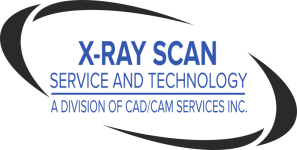X-Ray Film Scanners and Digitizers, X-Ray Film Scanning Services and Software
Effective Strategies for Scanning Medical Records
posted May-14-2015One of the decisions to make is how much to scan, when to scan it, and where to perform the scanning. If you’re a very small office, with only one physician and few patients, you may be able to scan all your records relatively quickly and easily, but let’s face it in today’s healthcare industry there aren’t many old-time family doctors working out of an office in their home, seeing a few patients a week. Most have had to merge with other doctors and see far more patients in order to survive the changed economics of healthcare.

Most practices have multiple doctors, and hundreds, if not thousands of patients. It would be impossible to scan everything all at one time…so the intelligent strategy is to scan what you need, as you need it. An effective way to do this is to scan the most recent medical data (possibly the past year) for current patients. This can be broken into even small scanning chunks by choosing the records each week for patients who have appointments for the following week. That way, you’re always scanning a week ahead of the time when you need the electronic records.
This strategy requires that you have your EMR set up and functional, so that the scanned records can be brought directly and immediately into the EMR system.
This strategy has several distinct advantages:
- Enables fast implementation of the EMR system
- Facilitates staff involvement and training with the EMR
- Helps to ensure document security and access during the transition time by limiting the number of files being scanned at any one time
- Works whether you’re scanning in house, or outsourcing
- Eases the burden of working with hybrid files – some paper and some electronic
- Reduces the over-all cost of conversion by scanning only what’s needed, when it’s needed
Once the current patient records are scanned, then you can decide what your next step is. If you have large numbers of existing paper records that are taking up valuable office space, then it may be prudent to ship them all out to areliable scanning service so that they can be quickly and efficiently scanned and converted. This type of bulk conversion of records that are not needed on a day-to-day basis is generally an economical way to accomplish your conversion. Furthermore, it will save money by eliminating the need for paper storage, and will save time by making these legacy records easier to search, access and distribute when you need to.
Choosing a Medical Records Scanning Company
Medical Records Scanning is backfile conversion with the additional caveat of HIPAA privacy requirements. Conversion of any type of paper records to digital files is an enormous task that requires organizational skills, expert knowledge and the patience to do tedious, time consuming work. Add to that the HIPAA requirements, and you may find that this is work best left to a scanning service bureau that provides a comprehensive medical record scanning service.
Medical records scanning is most often done in conjunction with a medical organization moving to an Electronic Medical Records (EMR) system. Because the medical practice doesn’t close its doors while the conversion is in process, it’s important to maintain a way to use the paper files for ongoing patient care while the conversion is taking place, and to determine the most effective way to receive the scanned documents so that these documents can also be easily accessed. Do you want the scanned files uploaded directly to your EMR, do you want them burned to a CD or DVD? Are there portions of the files that will need to be OCRd and transformed into searchable pdf files?
Most often, it will take members of the staff, the EMR representative and the scanning service bureau to determine the best processes to undertake for your particular medical practice and the way you do business and follow patients. Interestingly, we find that medical personnel are not prepared for the enormous flexibility that digital medical records provide. For instance, most practitioners don’t review historical trends in a patient’s lab work over any period of time, other than possibly looking at the most recent lab work to compare to the current. This is generally because with paper files, it’s next to impossible to do, but with searchable pdf files, the physician can find every reference to a particular lab test in the patient’s records, so a historical trend becomes easy to see.
Advising a medical practice just what benefits scanned medical records can provide is just one of the activities that an expert medical records scanning service bureau can offer.

